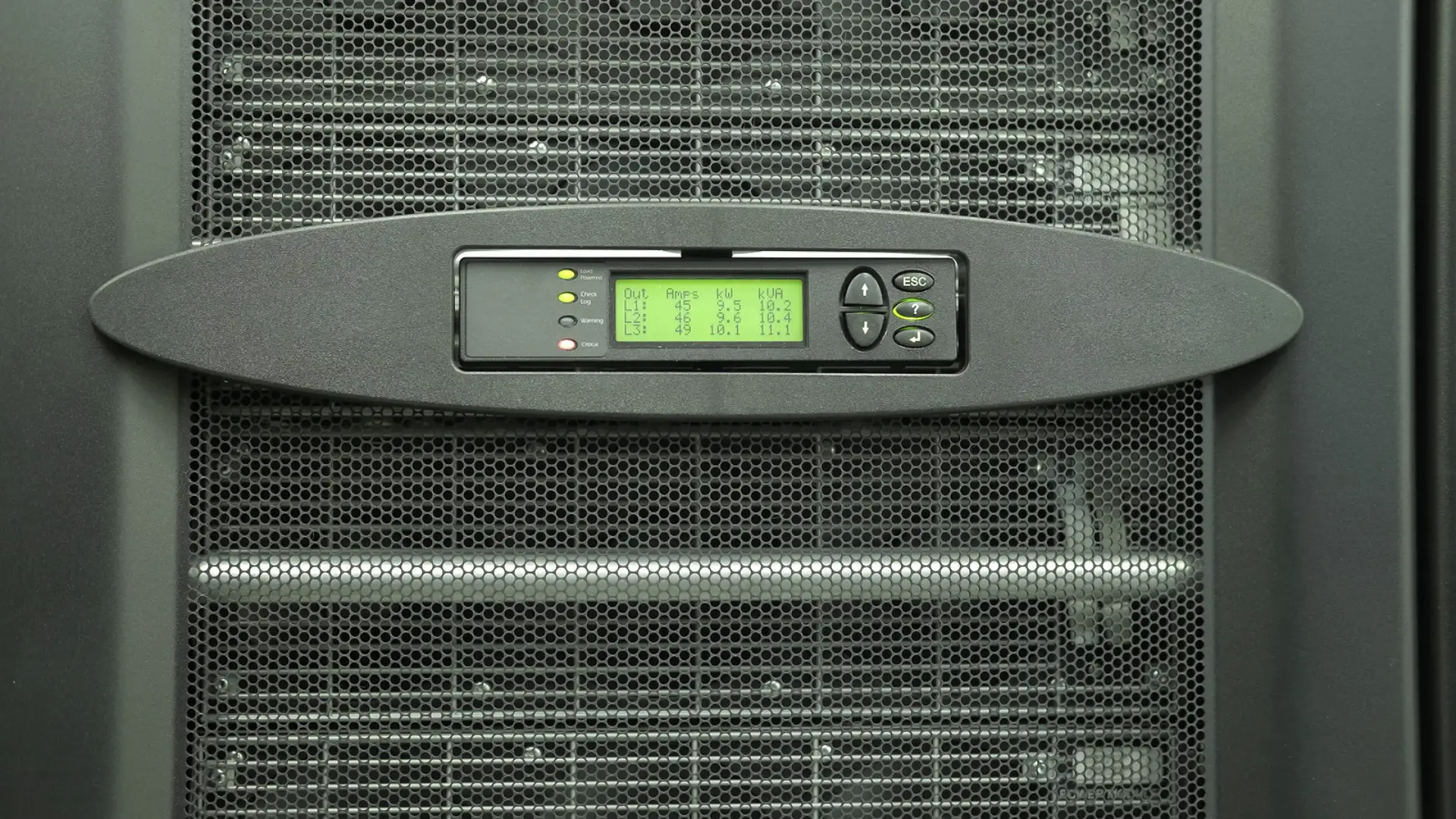
Uninterruptible Power Supply for Public Safety: Ensuring Resilience
The realm of public safety has dramatically evolved over the years, and its dependence on reliable, uninterruptible power supplies (UPS) has become an essential requirement. This pillar content delves into the significance of UPS for public safety, providing an in-depth understanding of its functionality, benefits, and optimal selection practices. We will also explore real-world examples to highlight its pivotal role in ensuring resilience in times of crisis.
Introduction: Power Continuity and Public Safety
Public safety is a paramount concern in our society, and it hinges on the seamless operation of various essential entities such as police departments, fire departments, hospitals, and emergency response units. These crucial organizations heavily depend on robust and uninterrupted power supply systems to fulfill their life-saving duties effectively. In times of disasters and emergencies, when power disruptions pose significant risks, Uninterruptible Power Supplies (UPS) play a pivotal role as a lifeline, ensuring the continuity, resilience, and security required to protect and preserve human lives.
Police departments, acting as the frontline defenders of law and order, rely on reliable power sources to maintain operational readiness. With continuous power supply, they can effectively communicate through radios and other critical communication systems, swiftly respond to emergencies, and perform their duties efficiently. Whether it's patrolling neighborhoods, investigating crimes, or coordinating large-scale events, uninterrupted power ensures that law enforcement agencies can carry out their responsibilities without hindrance.
Uninterruptible Power Supply: What is it?
An Uninterruptible Power Supply (UPS) is a comprehensive system designed to address the critical need for continuous power in the face of potential failures or disruptions in the primary power source. These disruptions can occur due to various reasons, such as grid failures, voltage fluctuations, natural disasters, or equipment malfunctions. The primary purpose of a UPS is to ensure uninterrupted and reliable power supply to connected loads, ranging from individual devices to extensive networks, data centers, or even entire cities.
UPS units are engineered to provide a seamless transition from the primary power source, typically the mains power grid, to an alternate power source during outages or voltage irregularities. This automatic switchover ensures that connected loads remain powered and operational, without any noticeable interruptions or disruptions. This capability is crucial for applications and systems that demand continuous power, as even momentary power disturbances can have far-reaching consequences, including data loss, equipment damage, or compromised operations.

Different Types of UPS
Uninterruptible Power Supply (UPS) systems come in various types, each catering to specific power protection needs and offering unique functionalities. Let's delve into the details of three prominent UPS types: Standby UPS, Line-interactive UPS, and Double Conversion On-line UPS.
- Standby UPS: The Standby UPS, also known as Offline UPS, represents the simplest form of UPS technology. It operates by monitoring the incoming power supply, typically from the mains grid, and activates its battery backup only when a power loss or significant disturbance is detected. During normal operation, the connected equipment receives power directly from the mains, bypassing the UPS system. However, when an outage occurs, the Standby UPS swiftly switches to battery power to ensure uninterrupted operation and protect against data loss or equipment damage. While offering essential power backup, Standby UPS systems may introduce a slight delay during the switchover process, which is typically within milliseconds.
- Line-interactive UPS: Line-interactive UPS systems are a step above Standby UPS models in terms of functionality. In addition to providing battery backup, they incorporate a voltage regulation feature that corrects minor fluctuations in the incoming power without resorting to battery power. This voltage regulation capability ensures that connected equipment receives stable and consistent power even in the face of slight voltage deviations. Line-interactive UPS units employ an automatic voltage regulator (AVR) or a tap-changing transformer to maintain the output voltage within acceptable limits. By mitigating voltage fluctuations, these UPS systems provide enhanced protection against power-related issues such as surges, sags, and brownouts, while minimizing battery usage and maximizing battery life.
- Double Conversion On-line UPS: Considered the most comprehensive and sophisticated UPS solution, the Double Conversion On-line UPS provides the highest level of power protection and quality. This UPS type employs a continuous double conversion process to ensure a seamless and near-perfect power supply, regardless of the incoming power quality. The Double Conversion On-line UPS operates by constantly converting the incoming AC power into DC power and then reconverting it back to AC power using an inverter.
The Importance of UPS for Public Safety
The significance of Uninterruptible Power Supply (UPS) systems in the realm of public safety cannot be overstated. It goes beyond maintaining regular operations; it directly impacts the preservation of lives and the overall safety of communities.
24/7 Operations
Public safety organizations, such as police departments, fire departments, and emergency response units, operate tirelessly around the clock to protect and serve the public. These entities rely on uninterrupted power to support their crucial services and ensure effective response during emergencies. A robust UPS system plays a vital role in maintaining the seamless function of various systems and equipment, including communication systems, dispatch centers, emergency lighting, surveillance systems, and network infrastructure. Without continuous power supply provided by UPS systems, the ability to communicate, coordinate response efforts, and access critical information would be severely compromised, putting lives at risk.
Data Protection
In today's digital age, data plays a pivotal role in public safety operations. From emergency contact information and crime databases to health records and incident reports, the integrity and availability of data are paramount for effective decision-making and response. UPS systems act as a crucial line of defense, preventing data loss and ensuring the continuous operation of data storage devices, servers, and network infrastructure. By providing uninterrupted power, UPS systems safeguard the integrity and availability of vital data, enabling public safety organizations to access crucial information in real time, enhance situational awareness, and make informed decisions.
Life-saving Medical Equipment
Hospitals and medical facilities are at the forefront of public safety, providing critical care and life-saving interventions. These institutions heavily rely on UPS systems to ensure the uninterrupted operation of essential medical equipment and systems. From intensive care units and operating theaters to diagnostic imaging machines like MRIs and life-support systems such as ventilators and dialysis machines, continuous power supply is imperative. UPS systems provide a reliable power source, safeguarding these life-saving devices from power disruptions. In emergency situations, where every second counts, UPS systems play a crucial role in maintaining the functionality of medical equipment, enabling healthcare professionals to provide immediate and effective care to patients.

Selecting the Right UPS for Public Safety
When it comes to choosing the most suitable Uninterruptible Power Supply (UPS) system for your public safety organization, several essential factors warrant careful consideration. These considerations ensure that your UPS selection aligns with the unique power requirements and critical operational needs of your organization. Here are some key factors to help guide your decision-making process:
- Power Capacity Assessment
Begin by conducting a comprehensive assessment of the total power requirements of all the critical equipment you need to protect. This includes considering the power demands of communication systems, data centers, surveillance equipment, emergency lighting, and other essential devices. By accurately determining the power capacity needed, you can select a UPS system with sufficient capacity to support all connected equipment during power outages.
- Battery Run-Time
Evaluate the desired battery run-time needed for your specific applications. Consider whether your priority is to fully backup critical data or to keep essential equipment operational until normal power supply is restored. The battery run-time should be chosen based on the estimated duration required to complete important tasks, provide emergency response services, or safely shut down systems if necessary. Select a UPS system that can provide the necessary run-time to support your organization's specific needs.
- Expandability and Scalability
Consider the future growth and expansion plans of your public safety organization. As your operations evolve and your power requirements increase, it is essential to choose a UPS system that offers expandability and scalability. Opt for a modular UPS solution or a UPS that can accommodate additional battery banks or power modules. This flexibility will enable you to easily upgrade and expand your power protection infrastructure as your organization's needs evolve over time.
- Quality of Power
Ensure that the UPS system you select provides clean and stable electrical power to protect sensitive equipment. Power anomalies, such as voltage fluctuations, surges, harmonics, or electrical noise, can potentially damage or disrupt critical devices. Look for a UPS that offers advanced power conditioning features, such as voltage regulation, surge suppression, and noise filtering. These features mitigate power disturbances, delivering a high-quality power output that safeguards the integrity and longevity of your equipment.
- Redundancy and Backup Strategies
Evaluate your organization's tolerance for downtime and the level of redundancy required. Consider implementing redundant UPS systems or configuring a backup strategy that includes multiple UPS units to provide added resilience. Redundancy ensures that even in the event of a UPS failure, there is an alternative power source available to maintain continuous operations and protect public safety.
Case Studies: UPS in Action
Examining specific incidents where UPS systems played a crucial role in public safety underscores their significance in mitigating the impact of power outages and ensuring the continuity of critical services. Let's explore two notable case studies that highlight the effectiveness of UPS systems during challenging circumstances:
- The Hurricane Sandy Incident:
During Hurricane Sandy in 2012, the New York City area faced catastrophic damage and widespread power outages. The impact on public safety was particularly severe, as hospitals found themselves grappling with the loss of power. However, hospitals equipped with robust UPS systems demonstrated their resilience and ability to navigate through this crisis. These institutions were able to maintain essential operations, including critical care units, emergency rooms, and life-support systems, ensuring uninterrupted medical services to patients in need.
The UPS systems effectively bridged the gap during power failures, allowing medical staff to continue providing life-saving care, preserving both patient lives and vital medical data. This incident underscored the crucial role of UPS systems in safeguarding public safety and highlighted their ability to prevent disastrous consequences during emergencies.
- The Texas Power Outages:
In 2021, Texas faced unprecedented power outages due to extreme weather conditions, leaving millions without electricity for an extended period. However, public safety agencies equipped with reliable UPS systems proved instrumental in maintaining their critical operations and supporting affected communities. Despite the widespread power shortages, these agencies ensured the continuity of essential services by leveraging UPS systems.
Seamless communication systems, functioning traffic signals, and uninterrupted emergency response services were made possible through the constant power supply provided by UPS systems. Public safety personnel were able to swiftly respond to emergencies, coordinate rescue efforts, and effectively manage the crisis, minimizing the impact on public safety. The ability of UPS systems to bridge the gap during extended power outages demonstrated their vital role in sustaining critical infrastructure and protecting the well-being of communities.
Uninterruptible Power Supply for Public Safety FAQs
1. What is a UPS, and how does it work in the context of public safety?
A UPS, or Uninterruptible Power Supply, is a system designed to provide continuous and reliable power to critical equipment and systems, such as those used in public safety organizations like police departments, fire departments, and hospitals. It works by seamlessly switching to a backup power source (usually batteries) in the event of a power outage or disruption, ensuring uninterrupted operation of vital equipment and services.
2. Why are UPS systems essential for public safety organizations?
UPS systems are crucial for public safety organizations because they ensure uninterrupted power supply to critical systems and equipment. This uninterrupted power is essential for communication systems, data protection, and the operation of life-saving medical equipment. Without UPS systems, these organizations would be vulnerable to power disruptions during emergencies, putting lives at risk.
3. What are the different types of UPS systems available for public safety use?
There are several types of UPS systems, including Standby UPS, Line-interactive UPS, and Double Conversion On-line UPS. Each type offers varying levels of protection and functionality, with Double Conversion On-line UPS being the most comprehensive and sophisticated option, providing the highest level of power protection.
4. How do I choose the right UPS system for my public safety organization?
Selecting the right UPS system involves assessing your organization's power requirements, battery run-time needs, future growth plans, and the quality of power required. It's essential to consider factors like redundancy and backup strategies to ensure the highest level of resilience during power outages or disruptions.
5. Can you provide examples of how UPS systems have been used effectively in public safety incidents?
Certainly! Two examples include the use of UPS systems during Hurricane Sandy in 2012 and the Texas power outages in 2021. In both cases, public safety agencies and hospitals with robust UPS systems were able to maintain essential operations, including critical care, emergency response services, and data protection, despite widespread power outages, highlighting the critical role of UPS systems in safeguarding public safety.
6. What maintenance and testing should be performed on UPS systems for public safety organizations?
Regular maintenance and testing of UPS systems are crucial to ensure their reliability. This includes battery health checks, load testing, firmware updates, and periodic inspections. Public safety organizations should establish a maintenance schedule and perform routine tests to verify the functionality of UPS systems.
7. How can UPS systems contribute to community resilience during emergencies?
UPS systems contribute to community resilience by ensuring that public safety organizations can continue their vital operations during emergencies. This includes maintaining communication systems, preserving critical data, and ensuring the availability of life-saving medical equipment. UPS systems play a pivotal role in minimizing the impact of power disruptions on public safety and community well-being.
8. Are there grants or funding options available to help public safety organizations acquire UPS systems?
Many governments and agencies offer grants and funding opportunities to support the acquisition of critical infrastructure, including UPS systems, for public safety organizations. It's advisable for organizations to explore available grants and partnerships to secure the necessary funding for UPS installations.
9. How can I ensure the longevity and reliability of UPS systems for my organization?
To ensure the longevity and reliability of UPS systems, it's essential to follow manufacturer recommendations for maintenance, perform regular testing, and train personnel on proper usage and troubleshooting. Regularly updating firmware and keeping an eye on the condition of batteries are also key steps in maintaining UPS system reliability.
10. Can UPS systems be integrated with renewable energy sources to enhance sustainability?
Yes, UPS systems can be integrated with renewable energy sources such as solar panels and wind turbines to enhance sustainability and reduce reliance on the grid. This integration can provide a reliable and eco-friendly power source during emergencies and everyday operations for public safety organizations.
Conclusion: Ensuring Resilience through UPS
With the increasing unpredictability of natural disasters and other emergencies, investing in a reliable, robust Uninterruptible Power Supply system is no longer an option but a necessity for public safety organizations. A well-implemented UPS can save lives, protect critical data, and ensure operational continuity even in the face of major power interruptions, thereby safeguarding the well-being and security of our communities.
Sources
https://www.mayoclinic.org/tests-procedures/resilience-training/in-depth/resilience/art-20046311
continue reading
Related Posts
Uninterruptible Power Supply for Business In today's digital and interconnected […]
Uninterrupted Power Supply For Computer In today’s fast-paced and digitally […]
Uninterruptible Power Supply For TV In the digital age, our […]



